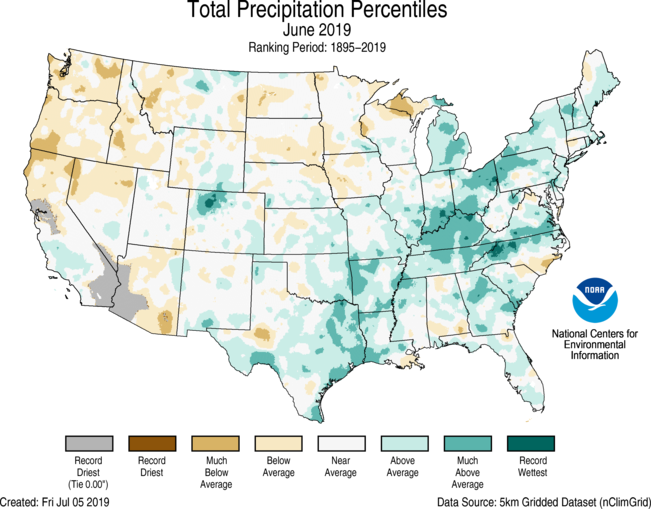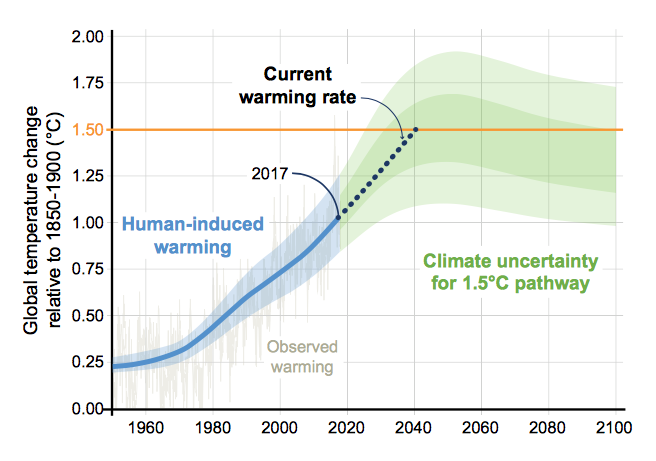The NOAA post Assessing the U.S. Climate in June 2019 (7/9/2019) has a quick summary of precipitation. In short, the 12 month contiguous U.S. precipitation record has been broken for the last three months.
Average precipitation across the contiguous U.S. for July 2018–June 2019 was 37.86 inches, 7.90 inches above average, and broke a record, exceeding the previous all-time 12-month period on record set at the end of May. The previous all-time 12-month record was 37.72 inches and occurred from June 2018–May 2019. Prior to that record, the all-time 12-month record was 36.31 during May 2018–April 2019. The previous July–June record was 35.11 inches and occurred from July 1982–June 1983.
Precipitation data can be obtained from the NOAA Climate at a glance page, where a csv file can be downloaded.









